
You don’t have to look too hard these days to find WFPB doctors and nutritionists who are reversing people’s type 2 diabetes on a daily basis; nor search too hard to uncover published research papers outlining their successes. However, is this low-tech method of reversing an increasingly common chronic disease, deemed for so long by the medical establishment to be a incurable disease, a new discovery? Not on your nelly! 1
Blog Contents
1935 – Dr I M Rabinowitch
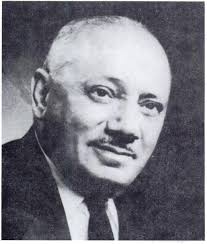
In a seminal paper published in 1935 2 , Dr Rabinowitch demonstrated that simple dietary changes (increasing the ratio of complex carbohydrates while reducing calorie intake) could reverse type 2 diabetes.
In his summary he states:
“I believe that in the data presented here there is incontrovertible evidence that the high carbohydrate-low calorie diet is more effective in controlling diabetes than all other methods of treatment hitherto reported…it is, therefore, more economical from the point of view of the cost of insulin…”
Before synthetic insulin was first engineered in 1978 (using E. coli bacteria), insulin was derived from pigs and cattle and was an expensive treatment.
He continues:
“…Experiences with this diet in general support the view that under-nutrition is still an important principle in the treatment of diabetes, except that the term “under-nutrition” has a somewhat different meaning now than in the days before insulin…”
Under-nutrition is seen all around us with the westernised diet of high calorie/low nutrient, processed, largely animal-based foods. Nobody puts it better than Dr Fuhrman 3 when he presents his simple formula:
H = N/C
or
Health Expectancy = Nutrient Intake / Calories
Basically, the more nutrients you consume compared to calories, the healthier you are likely to be and the longer you can expect to live.
Dr Rabinowitch continues:
“If, in conclusion, any one of the advantages of this diet may be stressed, it is of the simplicity of treatment...”
We have high-tech solutions for most things now – for the benefit of those industries that want to sell us the latest gadget – phones you can’t open to replace batteries; cars you can’t repair without a bank of expensive computer equipment. Unfortunately, this high-tech tendency spread to food manufacturers who saw that high levels of processing can produce more profits by providing longer shelf-life, cheaper production and distribution methods, and cheaper basic ingredients.*
But the simplest options (low-tech) are best suited to human diets. In nutritional terms, the simplest solution is organic, unprocessed plant foods or, at the least, organic, non-polluted animal foods. The latter are almost impossible to find now, because of the world-wide spread of human pollutants. However, there remain many less natural and human-created problems with eating plants than there are with eating animals.
*See Dr Joel Fuhrman’s brilliant book, Fast Food Genocide: How Processed Food Is Killing Us and What We Can Do about It 4 for a revealing analysis of how food processing came about as a result of the USA’s successes at providing high calorie/long shelf-life/cheap provisions for their military as a result of the two World Wars.
Dr Rabinowitch concludes:
“…and, as I have stated previously 5 the care with which the diabetic will follow treatment will be directly proportional to the simplicity with which it can be carried out.”
If you stick to a WFPB diet, you will get the best results. If you keep ‘treating’ yourself with ‘comfort foods‘, you’ll reduce the effectiveness of the simple dietary solution to your health problems. As with all things, the decision is in your hands.
And before we leave Dr Rabinowitch (1890-1983), I want to point out that this virtually unknown pioneer in the field of nutrition started publishing papers in 1921 and continued publishing a vast array of papers until 1961. A remarkable man.
So, was there no other research data being published between Dr R and the more recent papers of Drs Barnard 6 , McDougall 7 , Fuhrman 8 et al?
Indeed there was.
1958 – Dr Walter Kempner

Dr Kempner published a paper in 1958 9 in which he demonstrated similarly dramatic improvements in and reversals of diabetes, this time via his rice and fruit diet studies.
He published accounts of his work with diabetes, which resulted in the first documented reversals of blindness associated with diabetes (diabetic retinopathy) – indeed, this dramatic improvement occurred in around a quarter of his patients.
Even back in the 1940’s, Dr Kempner was showing that a range of chronic conditions, from kidney disease and hypertension 10 to heart disease and cardiac failure 11 12 could be successfully treated with simple dietary changes, rather than either pharmaceutical or surgical interventions.

Barbara Newborg’s book, Walter Kempner and the Rice Diet: Challenging Conventional Wisdom 13 , presents an interesting account of Dr Kempner’s life and work.
Increasing the amount of dietary fibre is a significant factor in being able to reverse diabetes and other chronic diseases. This was something which the following pioneer discovered during his medical practice and research as a surgeon in Uganda between the 1940’s and 1960’s.
1940’s-1960’s – Dr Denis Burkitt

Known as the Fibre Man, Dr Burkitt was the first to document 14 15 16 the differences in rates of disease (including diabetes) between the populations within rural Africa and in comparison with rates in the United States – with almost negligible cases of these chronic diseases in areas of rural Africa when compared with the widespread (and increasing) cases in the US.
The following WHO chart 17 shows what’s been happening since 1980:
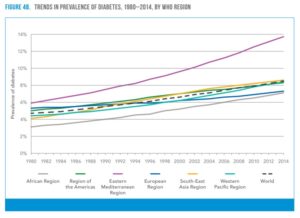
And, as we can see in the following chart 18 , things are predicted to get worse:
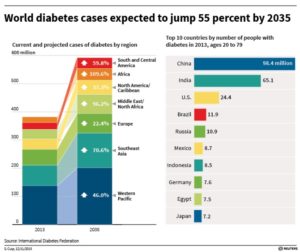
Dr Burkitt was prolific in publishing research papers 19 which outlined his explanation of why there were such huge geographical variations in chronic diseases like diabetes – and the primary explanation was (and continues to be) diet. The specific reason to which he pointed was the huge difference between the high fibre content (from unrefined plant foods) in the African diet and the much lower fibre content in the diets of US citizens.
In line with the previous two clinicians mentioned above, he started to publish paper after paper 20 21 22 23 24 that questioned whether these chronic diseases could be prevented by simple dietary intervention, particularly with regard to fibre-content 25 26 27 . His astute linking of Western dietary patterns with preventable chronic diseases 28 29 30 31 was one of the early inspirations for the likes Dr John McDougall, who did a wonderful videoed interview 32 with Dr Burkitt.
There’s also a free-to-view informative analysis of Dr Burkitt’s life and work, called Denis Burkitt and the origins of the dietary fibre hypothesis 33 , available on-line.
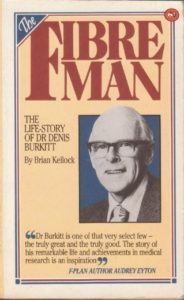
Brian Kellock’s book, Fibre Man: The Life-story of Dr.Denis Burkitt 34 , presents a biography of this highly influential doctor and prolific researcher.
Final thoughts
It’s unlikely that the average person in the street has ever heard of these three pioneers. That’s not such a surprise, really, since there are many inventors, researchers, medical and scientific pioneers who changed our lives without most of us even knowing of their existence.
However, what is more surprising, if not shocking, is that the medical profession appears to have been either utterly unaware or dismissive of their incredible successes with regard to reversing type 2 diabetes and other chronic diseases – something that the very latest and best pharmaceutical/surgical interventions are utterly incapable of achieving. Modern medicine merely treats the symptoms without claiming to be able to cure the disease 35 .
However, things are changing. An increasing number of authorities are now waking up to the fact (and it is a fact) that type 2 diabetes is a chronic disease that can be avoided, treated and reversed by making relatively simple dietary changes.
It’s true that the media 36 37 and the medical profession 38 39 are starting to accept that fasting 40 41 and calorie reduction (regardless, to some extent, of food type) 42 43 can reverse diabetes. However, in order to be able to live a normal life, rather than having to live on will-power and starve oneself while continually counting calories, a WFPB diet is the healthiest and most sustainable means of getting rid of diabetes, as well as reaping the other myriad long-term health benefits that this optimal diet provides 44 .
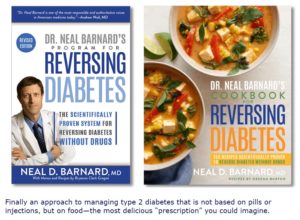
So, next time you hear of someone saying that diet can treat diabetes, you’ll know that at least three pioneers already knew about this many decades ago. It’s just that hardly anyone was listening to them…

References
- Urban Dictionary: Origins of “Not on your nelly”. [↩]
- Effects of the High Carbohydrate-Low Calorie Diet Upon Carbohydrate Tolerance in Diabetes Mellitus. Rabinowitch IM. Can Med Assoc J. 1935 Aug;33(2):136-44. PMID: 20319961. [↩]
- Health = Nutrient Intake ÷ Calories [↩]
- Fast Food Genocide: How Processed Food Is Killing Us and What We Can Do about It by Dr Joel Fuhrman [↩]
- OBSERVATIONS ON THE SIGNIFICANCE OF THE CHOLESTEROL CONTENT OF THE BLOOD PLASMA IN DIABETES MELLITUS. Rabinowitch IM. Can Med Assoc J. 1933 Feb;28(2):162-8. No abstract available. PMID: 20319008. [↩]
- Dr. Neal Barnard’s Program for Reversing Diabetes: The Scientifically Proven System for Reversing Diabetes without Drugs [↩]
- Simple Care for Diabetes by Dr McDougall [↩]
- The End of Diabetes by Dr Joel Fuhrman. [↩]
- Postgrad Med. 1958 Oct;24(4):359-71. Effect of rice diet on diabetes mellitus associated with vascular disease. KEMPNER W, PESCHEL RL, SCHLAYER C. [↩]
- Bull N Y Acad Med. 1946 Jul;22:358-70. Some effects of the rice diet treatment of kidney disease and hypertension. KEMPNER W. [↩]
- Treatment of cardiac failure with the rice diet; history of a patient with myocardial aneurysm. KEMPNER W. N C Med J. 1947 Mar;8(3):128-31. [↩]
- GP. 1954 Mar;9(3):71-92. Radical dietary treatment of hypertensive and arteriosclerotic vascular disease, heart and kidney disease, and vascular retinopathy. KEMPNER W. [↩]
- Walter Kempner and the Rice Diet: Challenging Conventional Wisdom by Barbara Newborg [↩]
- East Afr Med J. 1963 Jan;40:1-6. Some geographical variations in disease pattern in East and Central Africa. BURKITT DP, NELSON CL, WILLIAMS EH. PMID: 14017065 [↩]
- Cancer Prog. 1963;92:102-13. A CHILDREN’S CANCER WITH GEOGRAPHICAL LIMITATIONS. BURKITT D. PMID: 14282165. [↩]
- Sci Basis Med Annu Rev. 1969:82-94. A study of cancer patterns in Africa. Burkitt DP. PMID: 4917845 [↩]
- WHO Global report on Diabetes [↩]
- Reuters: The global diabetes epidemic in charts [↩]
- Lancet. 1969 Dec 6;2(7632):1229-31. Related disease–related cause? Burkitt DP. [↩]
- Rev Eur Etud Clin Biol. 1970 Mar;15(3):253-4. Are our commonest killing diseases preventable? Burkitt DP. [↩]
- Cent Afr J Med. 1970 Sep;16(9):197-201. A medical research safari: fruits and frustrations. Burkitt DP, Stanfield JP, Church JC. PMID: 5483668. [↩]
- Lancet. 1970 Dec 12;2(7685):1237-40. Relationship as a clue to causation. Burkitt DP. PMID: 4098668. [↩]
- Br Med J. 1971 May 22;2(5759):450-4. Diverticular disease of the colon: a deficiency disease of Western civilization. Painter NS, Burkitt DP. PMID: 4930390. [↩]
- Proc R Soc Med. 1971 Sep;64(9):964-5. Possible relationships between bowel cancer and dietary habits. Burkitt DP. PMID: 5114307.)) ((J Natl Cancer Inst. 1971 Nov;47(5):913-9. Some neglected leads to cancer causation. Burkitt DP. PMID: 5123337. [↩]
- Lancet. 1972 Dec 30;2(7792):1408-12. Effect of dietary fibre on stools and the transit-times, and its role in the causation of disease. Burkitt DP, Walker AR, Painter NS. PMID: 4118696. [↩]
- Pathol Microbiol (Basel). 1973;39(3):177-86. Diseases of the alimentary tract and western diets. Burkitt DP. PMID: 4198034. [↩]
- Trans Med Soc Lond. 1973;89:81-4. Diverticular disease of the colon epidemiological evidence relating it to fibre-depleted diets. Burkitt D. PMID: 4805633. [↩]
- Br Med J. 1973 Feb 3;1(5848):274-8. Some diseases characteristic of modern Western civilization. Burkitt DP. PMID: 4568142. [↩]
- Clin Radiol. 1973 Jul;24(3):271-80. Some diseases characteristic of modern western civilization. A possible common causative factor. Burkitt DP. PMID: 4592736. [↩]
- Proc Nutr Soc. 1973 Dec;32(3):145-9. Epidemiology of large bowel disease: the role of fibre. Burkitt DP. PMID: 4211989. [↩]
- JAMA. 1974 Aug 19;229(8):1068-74. Dietary fiber and disease. Burkitt DP, Walker AR, Painter NS. PMID: 4407955. [↩]
- Dr. Denis Burkitt interviewed by Dr. John McDougall [↩]
- Denis Burkitt and the origins of the dietary fibre hypothesis by CambridgeCore. [↩]
- Fibre Man: The Life-story of Dr. Denis Burkitt by Brian Kellock. [↩]
- Diabetes Quebec: Diabetes is an incurable disease. [↩]
- The Guardian: Radical diet can reverse type 2 diabetes, new study shows [↩]
- Medical News Today: Is this the formula for reversing type 2 diabetes? [↩]
- BMJ: Losing weight can reverse type 2 diabetes, but is rarely achieved or recorded [↩]
- Diabetes.co.uk: Reversing Type 2 Diabetes [↩]
- Fasting for Healing – Dr Alan Goldhamer [↩]
- The End of Diabetes: The Eat to Live Plan to Prevent and Reverse Diabetes by Dr Joel Fuhrman. [↩]
- Lancet. VOLUME 391, ISSUE 10120, P541-551, FEBRUARY 10, 2018: Primary care-led weight management for remission of type 2 diabetes (DiRECT): an open-label, cluster-randomised trial Prof Michael EJ Lean, MD Wilma S Leslie, PhD Alison C Barnes, PGDip Naomi Brosnahan, PGDip George Thom, MSc Louise McCombie, BSc et al. [↩]
- NHS: ‘Radical’ low-calorie diet may help reverse type 2 diabetes [↩]
- PCRM: Neal Barnard Reversing Diabetes through diet [↩]